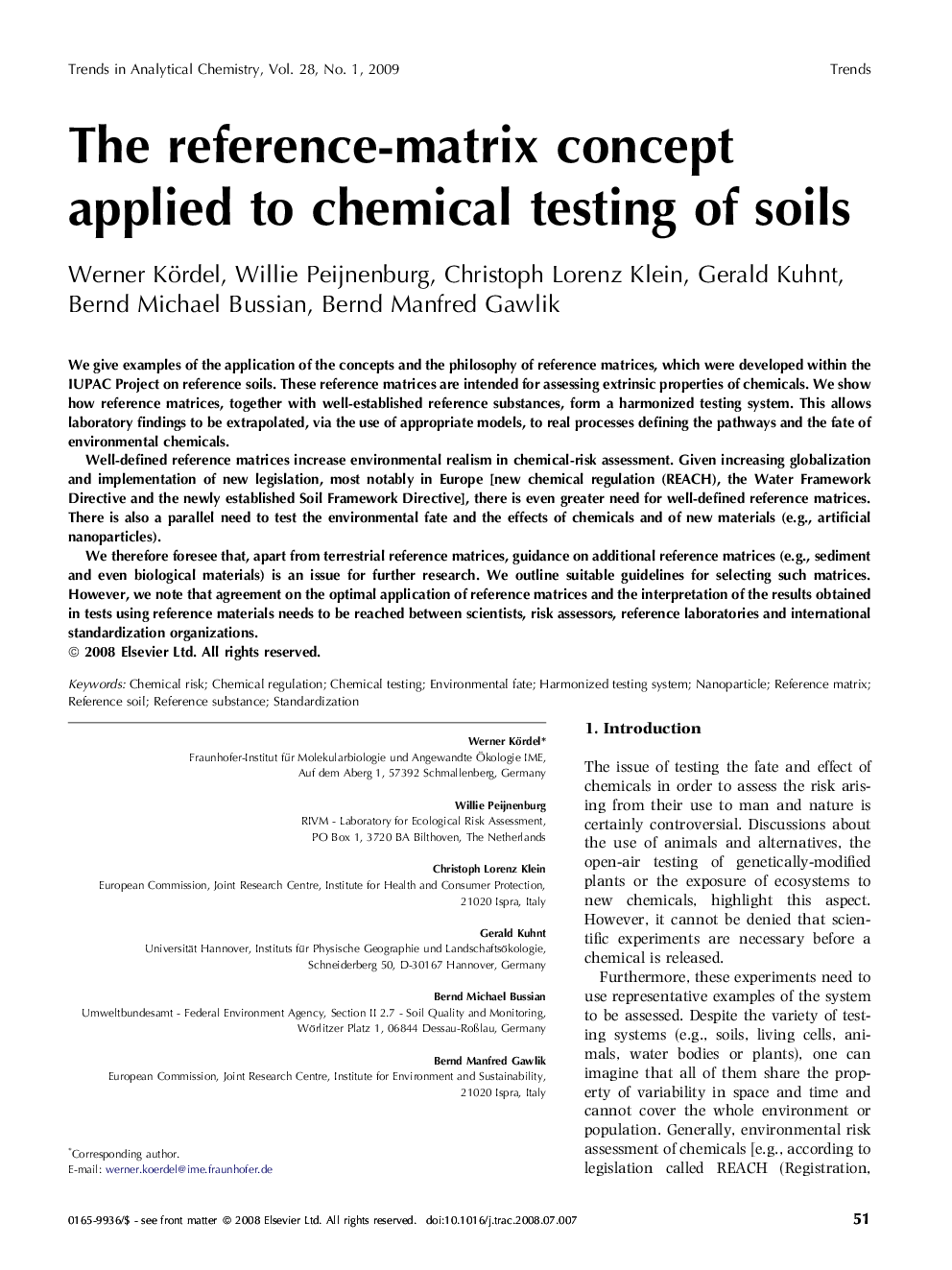| Article ID | Journal | Published Year | Pages | File Type |
|---|---|---|---|---|
| 1249389 | TrAC Trends in Analytical Chemistry | 2009 | 13 Pages |
We give examples of the application of the concepts and the philosophy of reference matrices, which were developed within the IUPAC Project on reference soils. These reference matrices are intended for assessing extrinsic properties of chemicals. We show how reference matrices, together with well-established reference substances, form a harmonized testing system. This allows laboratory findings to be extrapolated, via the use of appropriate models, to real processes defining the pathways and the fate of environmental chemicals.Well-defined reference matrices increase environmental realism in chemical-risk assessment. Given increasing globalization and implementation of new legislation, most notably in Europe [new chemical regulation (REACH), the Water Framework Directive and the newly established Soil Framework Directive], there is even greater need for well-defined reference matrices. There is also a parallel need to test the environmental fate and the effects of chemicals and of new materials (e.g., artificial nanoparticles).We therefore foresee that, apart from terrestrial reference matrices, guidance on additional reference matrices (e.g., sediment and even biological materials) is an issue for further research. We outline suitable guidelines for selecting such matrices. However, we note that agreement on the optimal application of reference matrices and the interpretation of the results obtained in tests using reference materials needs to be reached between scientists, risk assessors, reference laboratories and international standardization organizations.
